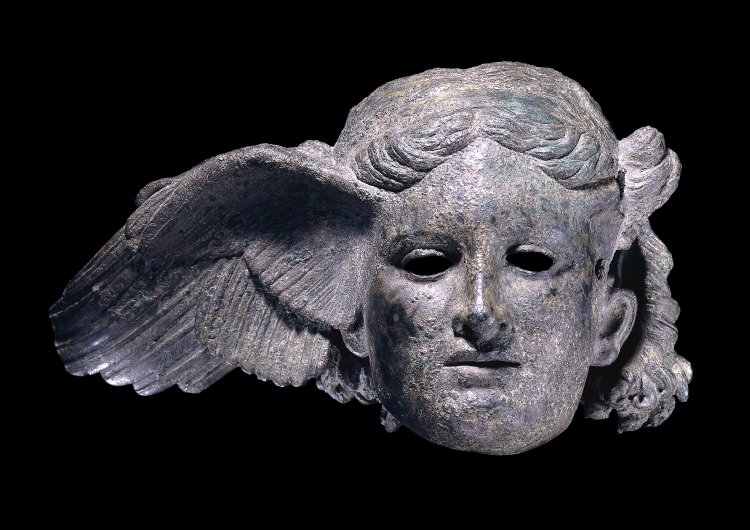 Picture a lemon. Now imagine cutting a wedge from the lemon. Now, close your eyes and picture yourself biting into that bright yellow slice.
Picture a lemon. Now imagine cutting a wedge from the lemon. Now, close your eyes and picture yourself biting into that bright yellow slice.
That saliva surge? It’s a complex physiological reaction prompted by a verbal suggestion, set in motion simply by thinking.
This simple example illustrates a core principle of medical hypnosis: the body responds to the thoughts, the emotions, and the past experiences of its “tenant.”
That might seem like overstating the obvious, but it is a truth that conventional medicine does a good job of ignoring, dismissing, or misunderstanding.
“Our society is the only one in the world to remove the mind from the body in healthcare. The mind is always involved. But in Western medicine we’ve extracted the mind, and we just look at the meat-suit,” says Lisa Ludovici, a medical support hypnotist based in New York City. “Healing happens in the mind. It always happens in the mind and results in the body.”
Ludovici is a leader in the application of hypnosis in medical settings. Her clients struggle with a wide range of disorders including back pain, vertigo, sciatica, migraines and other types of headache, sleep problems, infertility, and autoimmune disorders. Nearly all have longstanding conditions; most have been through a gamut of conventional therapies with spotty results.
“Yes, conventional medicine saves lives daily, we know that. And we live in a wonderful time with smart doctors and great technologies. We know it saves lives. But true healing is about more than simply saving lives or reducing symptoms. By accessing the mind with modalities like hypnosis, even more can be done to relieve suffering, to speed recovery from injury, and to improve health,” Ludovici told Holistic Primary Care.
Her success with seemingly intractable, irreversible illness has earned the respect of many New York physicians.
“About 95% of the patients who come to me are referred by MDs,” says Ludovici, who has a six-week waiting list. The referring physicians––many affiliated with the Mount Sinai system––are not only the “complementary and alternative” crowd; many are dyed-in-the-wool allopathic specialists. But they recognize the limits of drugs and surgery.
“We can’t heal with the meat-suit interventions alone. But doctors are not schooled to deal with peoples’ minds and emotions. In most clinics, there’s barely even enough time to work with the meat-suit.”
 For the past 6 years, the Mount Sinai Department of Pain Management has invited her to lecture on how hypnosis supports conventional care. She has also worked at the Veterans Administration’s New York Harbor Healthcare System, and was the first medical hypnotist to be hired by a VA neurology department.
For the past 6 years, the Mount Sinai Department of Pain Management has invited her to lecture on how hypnosis supports conventional care. She has also worked at the Veterans Administration’s New York Harbor Healthcare System, and was the first medical hypnotist to be hired by a VA neurology department.
Hypnosis, she says, is truly an adjunct and a complement to physical interventions. It is not a replacement or a substitute. But she stresses that the situation need not be reduced to an either/or choice. “Really we need both: pharmaceuticals and operations affect the physical body. Hypnosis addresses the mind-body connection. Without the latter, those other things will only have limited efficacy.”
Worried Sick
The average human body is made up of 50 trillion cells, which are constantly dying and being replaced. Turnover rates vary: neutrophils are replaced every 1-5 days; gastrointestinal epithelium turns over ever 5-7 days. Adipose tissue is the longest lived, replacing itself every 8 years.
The point here is that the body—the “meat-suit” as Ludovici likes to call it—is constantly renewing itself. So why do so many diseases become chronic and intractable? Why does the body renew its illnesses?
“If someone has IBS, but we know the entire lining of the GI tract is turning over in a week, why aren’t the new cells fresh and healthy?”
The tissues are turning over, but all too often, the person’s psyche is stuck in cycles of self-defeating thoughts, deeply engrained negative emotions, and unhealthy behaviors. These often have roots in early life trauma. Together, they create a template for perpetuating illness.
Hypnosis is a tool set for breaking cognitive and emotional cycles, and retraining the psyche to engender health and wellbeing. Ludovici says her objective is to help her patients unlock “the most powerful pharmacy of all: our own nervous systems.”
“Our bodies were created to heal automatically. The greatest lie we’ve ever been sold is the idea that our bodies cannot heal. I teach people how to control their own minds, so as to give their bodies some calm and peace. It is the most powerful self-help tool known to humanity.”
Echoing the title of Kenneth Pelletier’s seminal 1977 book, Mind as Healer, Mind as Slayer, Ludovici says the key to hypnosis is in the way it works with the connection between a person’s subconscious thoughts, emotions, and beliefs, and his or her autonomic nervous system. Subconscious beliefs and recurring thoughts affect digestion, respiration, sleep cycles, endocrine and reproductive function.
“If you don’t have to think about it for it to function, it is based in the subconscious. That’s where the automatic repetitive thoughts and feelings are too. All of that lives together. And that’s the mind-body connection,” explains Ludovici.
People can quite literally “worry themselves sick.” Worry is really a form of fear; it triggers release of cortisol and a host of other fight-or-flight stress signals. When this is a chronic state, it takes a big toll on the body.
“If you have self-hating thoughts all day long, your body is probably not going to feel very well. You will have digestive issues, pains, sleep issues, immune system problems, reproductive issues,” Ludovici tells Holistic Primary Care. “Every thought creates an expression in the body. A neurochemical is released. We have 70,000 thoughts per day, and 95% are the same ones over and over. Rumination. For many people, 80% of these thoughts are negative.”
For many clients, their self-negating minds are their own worst enemies: “No one loves me.” “No one really understands me.” “Life sucks.” “My job is a drag.” “Nothing ever works out.” “Everything I touch just falls apart.” These thoughts release chemicals that contribute to disordered physiology, she says.
But just as negative ruminations foster illness, people can learn to think in ways that engender health. That, she says, is the promise of medical hypnosis.
“We live in our beliefs. If you believe you live in a safe world, you will see what supports that belief. If you believe you live in an unsafe world, you will see that. If you are ill and believe you cannot get better, you won’t. If you believe that when you are 50, you’re ‘old,’ and that means being sick and frail, you start to get sick and frail.”
This does not mean that people are “to blame” for their illnesses, that diseases are “caused by” bad thoughts, or that they are cured with affirmations. But it does mean that our minds and emotions are intimately entwined with our physiology. By learning to recognize and change subconscious patterns we gain leverage over our functions.
“I teach people about their operating systems. Most people actually know very little about the OS that runs their lives,” says Ludovici. “We are very complex beings and there’s no owner’s manual. I teach clients how to understand their OS, so they can understand what happens to them.”
In contrast to the old stereotype of the malevolent hypnotist with a pendulum exerting his will over hapless, passive subjects, Ludovici teaches patients that they’re the masters of their own minds, which means they’re the masters of their bodies. “All hypnosis is self-hypnosis. But we can guide a person into it.”
Ancient Medicine
Hypnosis makes use of a naturally-occurring state in which the body is relaxed and the mind is open to suggestions. It is characterized by alpha, and then ultimately theta brainwaves.
“If you just close your eyes, you cut out hundreds of thousands of bits of data. The mind and body relax, and you go into alpha. After a while, you go into theta, a deeper  state.”
state.”
Our brainwave states change often over the course of a day, and we’re in and out of “hypnotic” states all the time—something advertisers and marketers understand well. Medical hypnosis gives people skills to make conscious use of these changes to facilitate healing and maintain wellbeing.
The term originates with Hypnos, the personification of sleep in Greek mythology. In the ancient tales, Hypnos is the son of Nyx (night) and Erebus (darkness). His brother is Thanatos, the personification of death, and his wife is Pasithea, one of the Charities, who represents relaxation, meditation, and altered states of consciousness.
Hypnosis is among the oldest healing arts. Ludovici notes that in ancient Egypt, there were “sleep caves” tended by healer-priests and priestesses. People would go into these caves in illness, pain, delirium, fever, and the healers would facilitate their entry into hypnotic states and then whisper healing directions in their ears.
But Ludovici stresses that while hypnotic states are “passive,” they are not a form of sleep. Nor is there loss of consciousness or will. Nobody can be hypnotized against his or her will.
Hypnosis in Clinical Settings
Though hypnosis is not anesthesia, it can certainly be used in conjunction with anesthesia and often improves clinical outcomes.
There have been over 200 studies showing hypnosis to be of benefit in a surgical context: it reduces pre-op anxiety, minimizes post-op pain, and speeds healing.
“There are like 30 hospitals across the country using hypnosis for surgery. Some other countries are very supportive of the practice. In Belgium, it is routine,” Ludovici says.
Oncologist Guy Montgomery and colleagues at Mount Sinai Medical Center looked at the impact of brief 15-minute hypnosis sessions in a cohort of 200 women undergoing breast biopsies. The patients were randomized to 15-minute hypnotic sessions aimed at reducing fear, nausea, and adverse responses to the procedure, or to similarly timed sessions of empathic listening. Both interventions were guided by a clinical psychologist.
Compared with those in the empathic listening group, the women who had hypnosis had 53% less perioperative pain, 46% less fatigue, and 74% less emotional upset. They used less post-op pain medication, there was an average 11-minute reduction in operating time during the procedure. There was a cost-saving too—roughly $772 per patient (Montgomery G, et al. J Natl Cancer Institute. 2007).
“Why aren’t more hospitals using this? It is very cost effective,” Ludovici asks.
 Among its myriad other clinical benefits, hypnosis has been shown to improve fertility, ease labor and delivery, aid people in smoking cessation and weight management, reduce stress, overcome phobias, and improve self-regulation.
Among its myriad other clinical benefits, hypnosis has been shown to improve fertility, ease labor and delivery, aid people in smoking cessation and weight management, reduce stress, overcome phobias, and improve self-regulation.
Most of her clients are already on at least one prescription medication. At the VA, fully 100% of the patients she works with are on something, and many are on multiple drugs. Ludovici says she routinely asks about medications, so she knows what her clients are taking and how those drugs might be affecting their emotions and cognition.
But she does not get involved in medication decisions, nor does she encourage patients to stop their meds. That is beyond her scope of training, and she leaves it to physicians. But it sometimes happens that after several months of hypnosis work, people report that they require less medication.
A Healer’s Journey
Like many people drawn to the healing professions, Lisa Ludovici’s path into medical hypnosis began with her own personal health struggles.
From the age of 3, she suffered from severe headaches. “From age 3 to 40, I had around 17 migraines per month. I was either going into one, in one, or coming out of one. Very rarely did I have 3 consecutive days where I was comfortable. For much of my young adult life, I’d never had the experience of a comfortable head.”
By her early 30s, she’d tried just about every drug her physicians could offer. She’d also explored many other things. “I did weight training, I changed my diet, eliminated the processed foods. I tried acupuncture and acupressure. Nothing ever ameliorated the migraines.”
At the time, she worked in marketing at major corporations. It was a high-expectation, high-pressure environment. Not only did it aggravate the headaches, it was also unfulfilling.
“I wanted a career that helped people. I had no idea what that was, but I knew I had to leave the corporate world.”
After a few twists and turns, Ludovici landed in New Mexico, at the Hypnotherapy Academy of America which, at the time, was in Santa Fe (now in Albuquerque). The intensive 10-week full-time training was taught by medical professionals, and prepared graduates to work in the medical context. (See How to Find a Good Hypnotherapist.)
“On the eighth day of class, we were on a morning break, and I had my head in my hands. The co-director of the program came over. She asked, “Are you OK?” I said, “Yes, just a migraine.” She said, “Come into my office.” This proved to be a personal and professional turning point.
“She guided me into hypnosis, and used metaphors to teach my body how to start functioning the way it is supposed to function. We worked together for about 9 minutes before class. I went to class, my head felt better. By the time we broke for lunch, my head felt completely comfortable,” Ludovici recalls.
She subsequently hired her own hypnotherapist, for a series of 10 private sessions aimed at getting to the deeper antecedents of the headaches. She has been 100% migraine-free since February 2010. “All the triggers were no longer triggers—and everything used to trigger my headaches––certain foods, certain odors, airplanes, everything.”
“That’s why I dedicate my life to this.”
Root Causes
Ludovici’s desire to understand the roots of her own illness led to the recognition that much of our unconscious emotional programming begins in infancy, even in the womb.
“A mom’s thoughts, feelings, behaviors, emotions, all of those are triggering the release of chemicals that affect the baby. We don’t have analytical conscious minds in the  womb, or in infancy. We can’t say, ‘Ahh, that’s just mom’s stress, she’s having a bad day.’ We become programmed by the consistent flood of chemical signals.”
womb, or in infancy. We can’t say, ‘Ahh, that’s just mom’s stress, she’s having a bad day.’ We become programmed by the consistent flood of chemical signals.”
At one point during her training, Lisa asked her mother about her experiences during pregnancy. It turned out that her parents’ relationship was strained, and her mother felt a lot of fear, anxiety, and often had migraines.
“I learned how to have migraines,” she reflects.
This is not so far-fetched when you consider the intimate biochemical exchanges that happen in utero, and also factor in the function of mirror neurons in the brain. “We absorb and mirror other peoples’ thoughts and beliefs just by being in proximity.” The emerging research on intergenerational trauma bears out the degree to which patterns of dysfunction are transmitted and expressed across generational lines.
As people grow, their own physiology as well as the world outside themselves, begins to mirror back the core unconscious beliefs. Low self-esteem and a sense of unworthiness can have direct suppressive effects on the immune system, and they also have great influence on someone’s social interactions, job performance, and effectiveness in engaging with the basics of living.
There are strong correlations between poor self-esteem, childhood trauma, and a host of autoimmune conditions and pain syndromes.
Ludovici views pain as simply a message. It is a communication from the body alerting the mind that something needs attention. “It’s the knock that says, ‘Hey! Take a look here!’
That signal might mean, ‘Now get yourself to the ER!’ But especially if the pain is chronic, it might be saying, ‘There’s something you need to deal with that you are avoiding.”
Finding the Clues
Ludovici says that a few simple questions can usually reveal a wealth of information about what’s going on with patients. Always ask about:
- Their beliefs about themselves
- Their beliefs about and perceptions of their bodies
- Their feelings about specific organ systems and functions (digestion, breathing, spine, reproductive system, etc)
- What was happening in their lives in the year prior to the first onset of the symptom(s) in question
- The things that bring them joy
It is also worthwhile to ask patients about their online lives and their engagement with social media. While the internet provides a wealth of interesting and helpful information, it also extremely hypnotic, and it delivers a constant stream of things to worry about, compare oneself to, and envy. This can fuel negative, self-defeating inner states.
Managing Media
“I always ask patients if they watch the news on TV. If they do, I ask them to consider that perhaps they are being hypnotized. Especially if they are in the habit of having the news on in the background all the time,” says Ludovici. “They call it programming for a reason. Broadcast news is just fear and terror.”
She typically advises her clients to cut their TV news exposure by half. Then a week or two later, to cut it further, eventually eliminating TV news altogether and getting news solely online. While the internet is also swarming with alarm signals, it does give viewers far greater choice about the content they see, as well as the pace of delivery.
She urges patients not to fall asleep with the TV on. Doing so allows negative, manipulative messaging to enter directly into the subconscious mind—without even the usual filter of the ‘awake’ mind and its capacity for logic and critical thinking. Ludovici stressed that the subconscious mind is not logical or critical.
For people who want to have sound in the background of their lives, she recommends instrumental music without lyrics. It can be any style a person enjoys. The absence of verbal input is important because it gives the subconscious mind a break from the incessant input of messages that are intended to elicit strong and often negative emotions.
Beware of Nocebos
Whether practitioners are conscious of it or not, hypnotic suggestion happens often in medical encounters.
“I work with a lot of the issues around communication between doctors and patients. When people go to doctors, they’re often in altered states simply because they are sick. They feel fear and fight-or-flight reactions are going on. They may be in pain or feverish. The point is that they are very vulnerable.”
 Physicians, she stresses, are perceived as authority figures; their impact on the subconscious minds of their patients is very great. How a doctor describes a diagnosis or delivers clinical information—especially if it is “bad news”—can unconsciously predispose a patient toward healing or toward disease progression. She urges practitioners to be aware of the potential for “nocebo” effects—negative suggestions delivered with strong authority.
Physicians, she stresses, are perceived as authority figures; their impact on the subconscious minds of their patients is very great. How a doctor describes a diagnosis or delivers clinical information—especially if it is “bad news”—can unconsciously predispose a patient toward healing or toward disease progression. She urges practitioners to be aware of the potential for “nocebo” effects—negative suggestions delivered with strong authority.
“When a client comes in and says, ‘Well my doctor said…’ my ears perk up. Because whatever she says next will likely be very, very important.”
A diagnosis can be liberating for some patients; it gives a name and context to the previously unexplainable symptoms. It makes the random phenomena more comprehensible. But it can also become a trap.
“The symptoms are real, the bodily signs are real, something is really going on. But the ‘diagnosis’ is an explanation. Essentially it is a belief system. For many patients it becomes an identity. They put it on Facebook. It becomes ‘their’ disease. She is no longer a person with a condition, she’s a ‘breast cancer patient.’ It defines her. Even after treatment, she still identifies as a ‘cancer survivor.’ People hold onto their diagnoses.”
This isn’t to say that patients shouldn’t take their diagnoses seriously, or that physicians should be untruthful. The point is to recognize the unconscious programming that goes along with diagnostic pronouncements.
“Don’t live to your diagnosis,” she often tells patients. “Be aware of the nocebo effect,” she urges practitioners.
Medical hypnosis is not for everyone, and it is not a cure-all. But it can make a world of difference to many people, especially if they’ve struggled for years with chronic illness.
Some may be resistant, though.
“They may be nervous about what will happen during the sessions. They say, ‘I’m a control freak.’
“I say, ‘Good to meet you. I’m a reformed control freak. But if you’re telling me you’re a control freak, but you’ve had chronic pain for 20 years, you’re not really in control, are you? So, let’s get you back into control––so you’re not in pain, so you can sleep. The truth is, people with chronic conditions do not feel like they’re in control, no matter what they say. Hypnosis can really help with this.”
END







